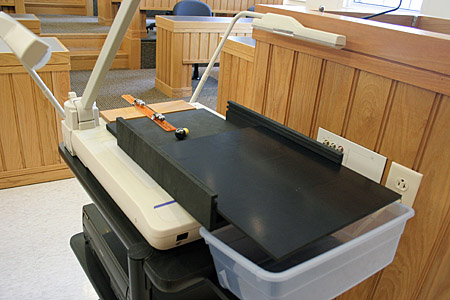
Select image: setup covered track
| Modern Physics >
Elementary Particles |
DCS# 7E10.xx |

| black box |
202-13-B-1 |
| magnetic viewing film |
202-13-B |
| spherical magnet |
202-13-B |
| steel balls |
202-13-B |
| Gauss accelerator |
202-13-B |
| tupperware ball catcher |
202-16-D |
| strong magnet "eraser" |
206 |
| document camera | 201 |